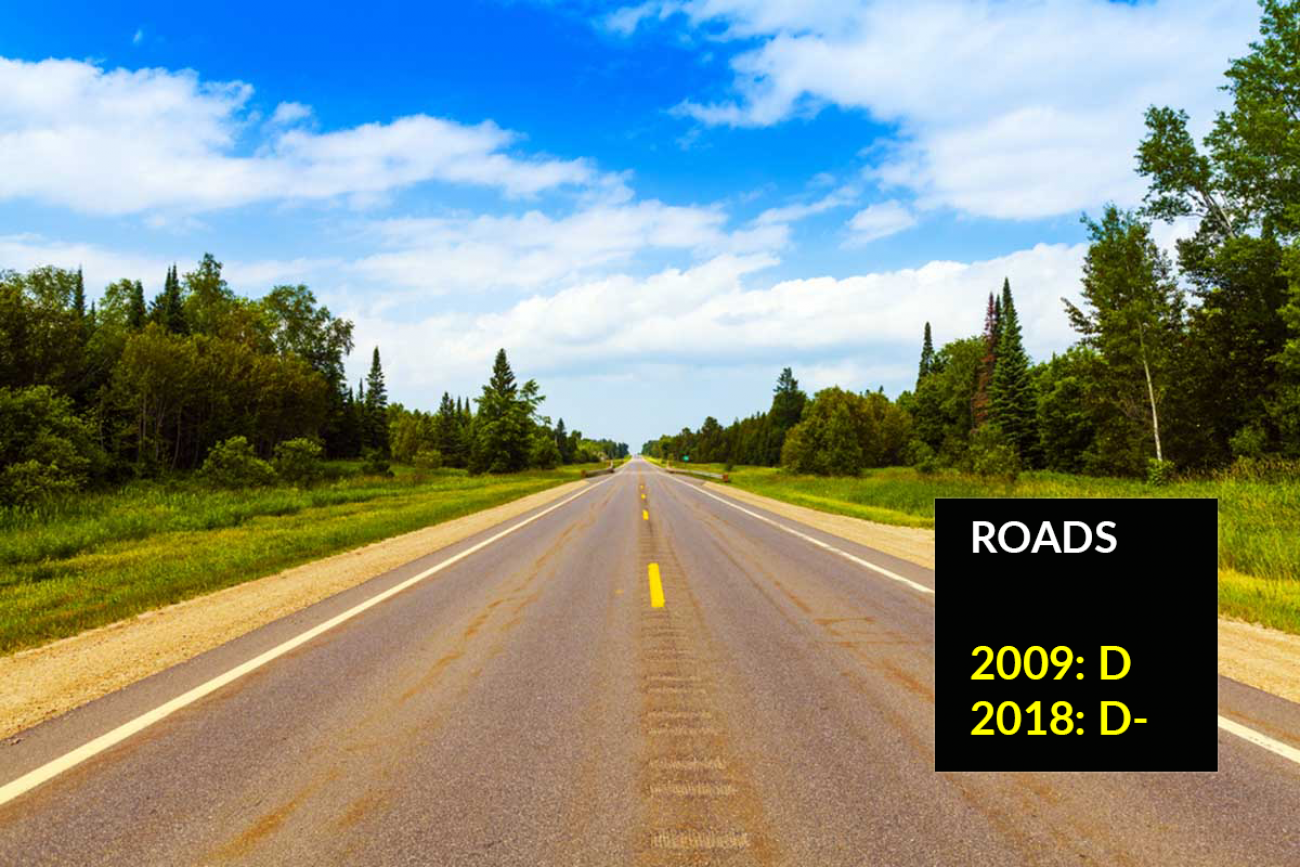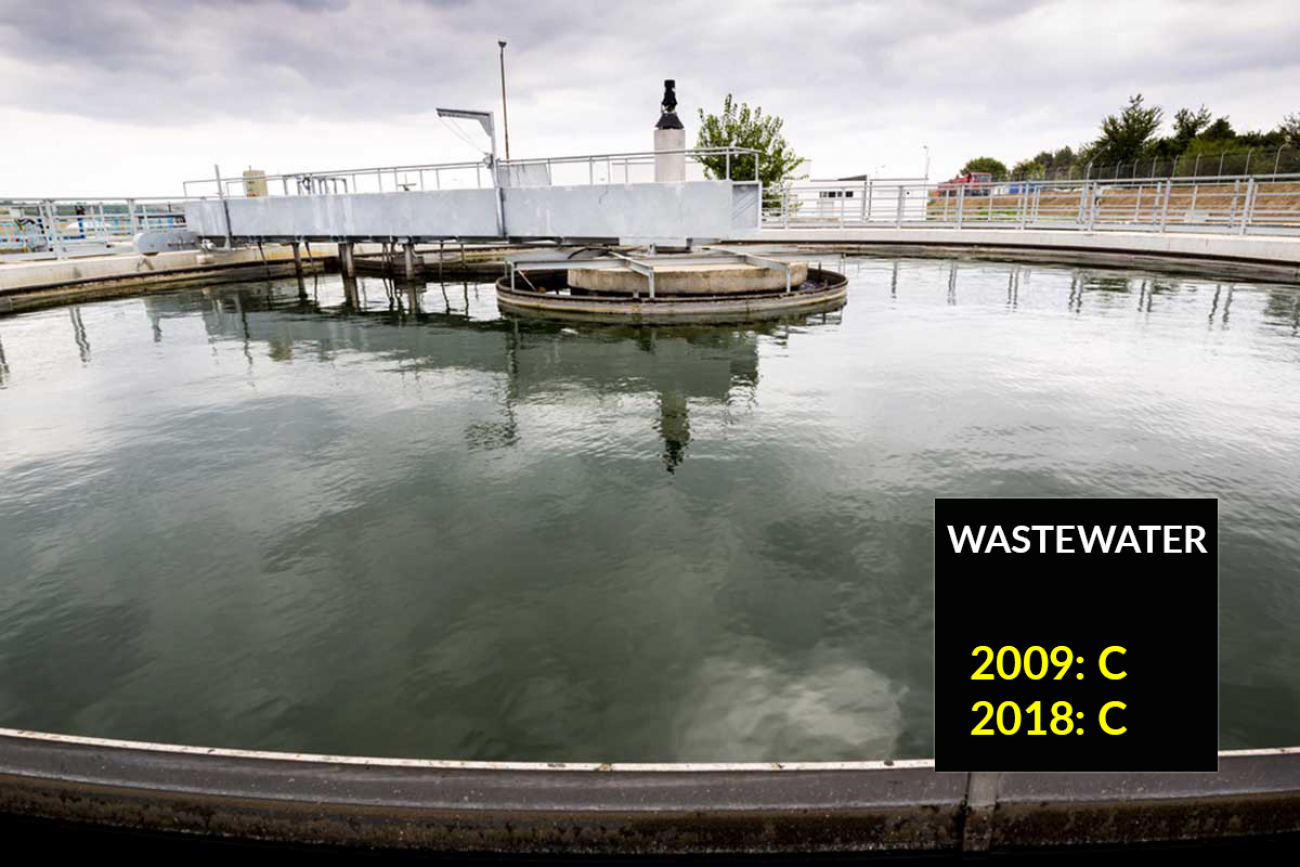Michigan’s 2018 infrastructure report card: D+















Stop us if you’ve heard this before.
Michigan’s roads are in terrible shape. Bridges are crumbling faster than the state can afford to fix them. Systems that provide clean drinking water are too old and damaged to fully withstand stress from age, pollution and demand.
Those are among the conclusions of civil engineers on Michigan’s aging infrastructure, according to a new, detailed report released Tuesday.
Related: Where they stand: Michigan governor candidates’ infrastructure policies
Issue Guide: Michigan needs $4B more per year for infrastructure, but how to pay for it?
The kicker: The state’s infrastructure has barely improved in nine years, since the height of the recession, signaling that Michigan’s failure to invest enough money to maintain bridges, roads, drinking water and wastewater treatment has left the state’s internal systems on the brink of failure. That is, unless lawmakers boost funding and look for innovative solutions to better allocate scarce resources.
Michigan’s infrastructure earned an overall grade of D-plus on a new scorecard by the American Society of Civil Engineers’ Michigan section. That’s slightly better than the D letter grade it earned in 2009, the last time the engineers released a detailed report card for the state.
Twenty-seven states and Washington, D.C., have been issued updated infrastructure report cards since 2013, according to the engineering society. Of them, Michigan ranks the worst, with Arkansas, Louisiana and New Jersey also earning a D-plus grade.
Michigan a bottom dweller on infrastructure
Michigan tied for the worst score (D+) awarded by the American Society of Civil Engineers among 27 states graded on infrastructure since 2013. Here is how other states, plus Washington, D.C., fared, and the year rated:
- Alabama 2015 C-
- Alaska 2016 C-
- Arizona 2015 C
- Arkansas 2014 D+
- Florida 2016 C
- Georgia 2014 C
- Idaho 2018 (to be released March 8) N/A
- Illinois 2018 C-
- Iowa 2015 C-
- Kansas 2013 C-
- Louisiana 2017 D+
- Maine 2016 C-
- Michigan 2018 D+
- Missouri 2013 C-
- Montana 2014 C-
- Nevada 2014 C-
- New Hampshire 2017 C-
- New Jersey 2016 D+
- New York 2015 C-
- North Carolina 2013 C
- Oklahoma 2013 C-
- Pennsylvania 2014 C-
- Tennessee 2016 C
- Texas 2017 C-
- Utah 2015 C+
- Vermont 2014 C
- Virginia 2015 C-
- Washington, DC 2016 C-
Perhaps not surprising, Michigan’s roads had the worst grade among all the categories our state was rated on. They’re not technically failing, but close — Michigan’s roads earned a grade of D-minus. No individual state infrastructure system earned better than a C-plus.
“Michigan residents, business owners and policymakers must decide how much we value the personal and economic advantages that come from a modern, safe and efficient infrastructure network,” the engineers’ group wrote.
Meaningful upgrades, ASCE wrote, require innovative policies, including the creation of a statewide council that can develop a smart, long-range roadmap for tackling bridge supports, sewage overflows and other threats to residents’ health and safety — in other words, the unsexy but critical maintenance Lansing has often ignored, until an emergency forces the state to address it.
“Just as you change your car’s oil regularly, we must replace pipeline(s), repair dams, fix bridges, remove old dams, and fill in potholes as needs arise,” the report scolded the state.
Finding a permanent funding solution for roads and other costs has proven elusive. Gov. Rick Snyder signed a road-funding package in 2015 passed by the Republican-led Legislature that would generate $1.2 billion for roads and bridges by 2021. Half will come from new revenue through higher gasoline taxes and vehicle registration fees, while the other half will be diverted from the roughly $10 billion general fund.
Democrats and other critics say that plan is inadequate and won’t raise enough money to fix all of the roads in bad shape. Lawmakers last week agreed to advance $175 million in emergency road funding this year, while another $150 million is scheduled to come out of the general fund in 2019.
Members of Michigan’s Legislature, and some candidates for governor have called for tax cuts or for working with existing revenue to address infrastructure. They’re at odds with those who call for more tax revenue or increased user fees, or both.
The ASCE report called on Michiganders to “reach out to elected officials to let them know Michigan needs consistent and reliable funding to maintain and improve our transportation and water infrastructure, and not to wait for our systems to fail.”
The engineers stopped short of recommending specific funding solutions, preferring to leave those decisions to policymakers. But they noted that the longer upkeep is deferred, the larger the bill when it’s time to be paid.
“We’re going to see more roads with big potholes, more dams that might fail and wash out, flooding … and we could possibly have more Flint situations with poor water systems,” Melinda Bacon, president of the American Society of Civil Engineers’ Michigan section and co-chairwoman of the state’s 2018 infrastructure report card, told Bridge in an interview.
“We really need to look at the whole problem and come up with some really creative and innovative solutions to start working on our infrastructure,” said Bacon, a senior project engineer with the consulting firm SME in Kalamazoo.
The state scorecard was prepared by a volunteer group of civil and environmental engineers from Michigan. The grades take into account such factors as whether infrastructure can meet capacity, its physical condition, government funding levels and repair costs.
A grade of D means a state’s infrastructure is in poor to fair condition, with many systems nearing the end of their life cycles and deteriorating.
Here’s a snapshot of how Michigan fared in 2018:
- Roads: D-
- Stormwater: D-
- Drinking water: D
- Schools: D+
- Bridges: C-
- Dams: C-
- Energy: C-
- Rail: C-
- Transit: C-
- Aviation: C
- Navigation: C
- Wastewater: C
- Solid waste: C+
See what new members are saying about why they donated to Bridge Michigan:
- “In order for this information to be accurate and unbiased it must be underwritten by its readers, not by special interests.” - Larry S.
- “Not many other media sources report on the topics Bridge does.” - Susan B.
- “Your journalism is outstanding and rare these days.” - Mark S.
If you want to ensure the future of nonpartisan, nonprofit Michigan journalism, please become a member today. You, too, will be asked why you donated and maybe we'll feature your quote next time!

